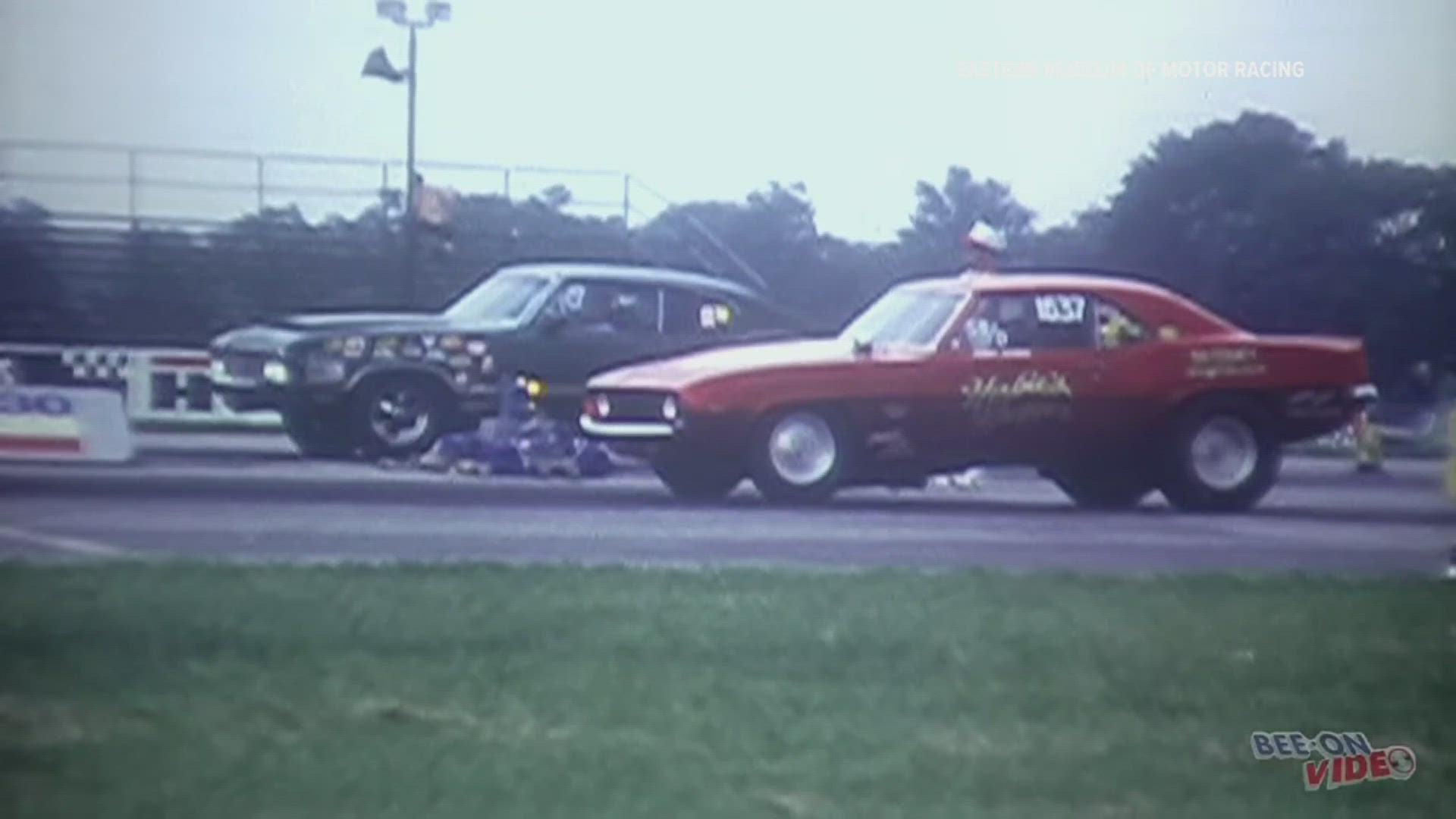YORK, Pa. — Back in the day, when the hot rod era was at a high among American-made car manufacturers, it wasn’t uncommon to use an airport runway as a drag strip.
On Saturday nights for nearly 20 years, the York Airport in Thomasville, York County had a dual purpose: first as an airport and second as a drag strip.
It was a hot place to race in the 1960s and 1970s. They brought West Coast drag racing to the "Pride of the East."
“[It] was convenient for us because we all were from the Hanover, Abbottstown and New Oxford area. So, it wasn’t far to tow," said Mike Hull, of Hanover, who was a crew member the Eliminator Racing Team, a local team from central Pennsylvania. "U.S. 30 was known nationwide, and it was one of the more elite racing tracks and we got to go there every week. Where a lot of people only got to at the big drag meets."
York U.S. 30 was known as the super track of the east. The drag strip was the first NHRA-sanctioned track in the region, and it wasn’t always your typical race car that burned some rubber.
“It was my family car, and we’d go racing with it Saturday night," said Bob Kashner, a former racer and worker at York U.S. 30. "If I broke something, I had to fix it up, then we could take my family away during the day."
Kashner raced to have some fun and make money but worked during the week, pinching pennies to race his daily driver.
The dragway was a hot attraction, bringing car counts in the hundreds and racing two and sometimes four abreast across the runway.
“We’d have to stop the drags to let the airplanes land, and sometimes they would knock out our timing lights," said Kashner.
“We clocked the airplanes coming in, as well as the cars," said Jeff Golden, former race director at the track. "There was one guy that had a '54 Corvette called the Birds Nest, and he made a pass and an airplane started coming in without permission, and he was racing the airplane down the track. Luckily, the airplane was slowing down and he was speeding up and he kept saying, 'Baby, don’t break now. We have to get to the other end.'"
Before it was named York U.S. 30, the strip was briefly known as the South Penn Drag-O-Way. They raced in the opposite direction until it changed hands in 1960.
The racing stopped after the 1979 season. Improvements were made to the airport as the air traffic increased, with the runway growing a thousand feet from 4,100 feet to 5,100 feet, and although there hasn’t been any racing in 44 years, a few features still remain.
“The rusty guard rail there. That was there to keep cars from heading out on 30 that if a parachute failed or brakes failed or a mechanical problem," said Mark Tomlinson, York Airport operations manager, who's been with the airport since the early 1990s. "That was their last line of defense. From some of the stories I’ve heard these guys talk about, they would stack up haybales in front of that."
Many stories can be told between the cracks of the old pavement, where the fans sat to watch the horsepower ignite and also where the work to the cars took place.
“This road here, was the old return road back to the pit area," Tomlinson said, explaining where things were. “There was a building here. It had restrooms, I think a gift shop and a snack bar."
Once in a while, pieces of history from the drag strip still pop up, like a sign from a race or the scoring boards.
A lot of people have some good memories of times spent at the track.
“If I could reach back tomorrow, I’d bring it back, but a lot of things have changed just like everything else in drag racing," said Hull. "A lot of it is professional; it takes a lot of money to run in the drag races, just like anything thing else, today. But, it just seems like everything back in the old day, everyone had a chance if they had the knowledge and the intelligence to do it, and that’s what made drag racing so interesting back in the day. You at least had a chance."
Racing Results
Williams Grove was rained out Friday night. Saturday, Freddie Rahmer stayed hot and collected his third win in a row at Lincoln. As we're less than two weeks away from Pa Speedweek, Port Royal was home to the Appalachian Mountain super late model Speedweek. Fifty cars entered the field at the Speed Palace. Michael Norris started on the pole and was able to be in the P1 spot at the end of the race for the feature win. Gregg Satterlee won the third night at Hagerstown on Sunday.

